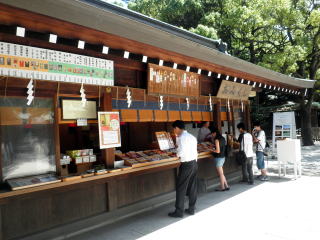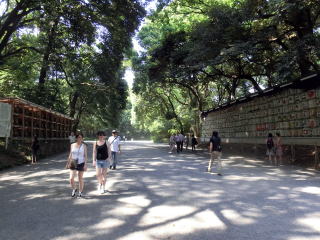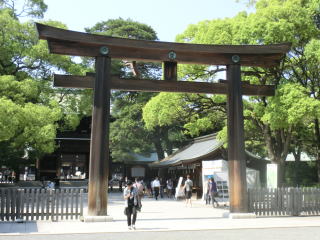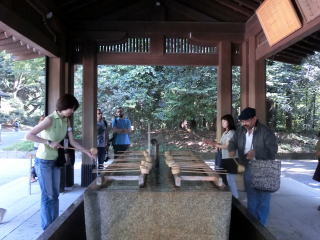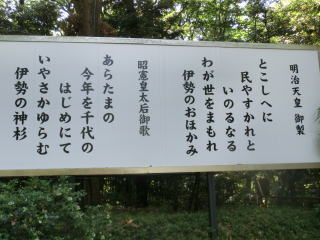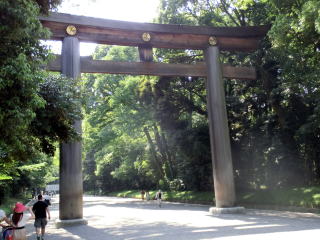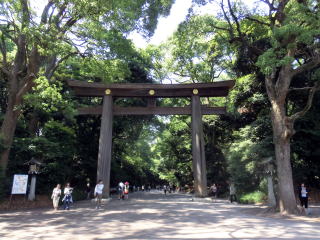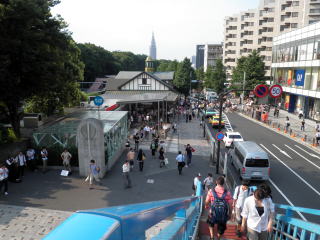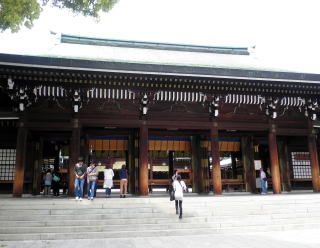


The Meiji Shrine is dedicated to the Emperor Meiji (1852-1912) and his
consort, Shoken-
Kotaigo (1849-1914). It was founded in 1920 and its precincts are an area
of 70ha with
about 180,000 trees donated by the people from all over Japan. The emperor
Meiji is
the great grandfather of the present emperor, born and ascended the throne
in Kyoto in 1867.
The emperor Meiji and his followers achieved a great political reform called
the Meiji Restoration
in 1868 and established an imperial government with centralized administration
in place of
the samurai feudal regime which had lasted about 700 years since 1185.
He moved the capital from Kyoto to Edo in 1869 renaming the city of Edo
Tokyo which means
eastern Kyoto.
The Meiji Shrine is located a few minute walk from JR Harajuku station and one can come to
JR Harajuku station in 4 minutes from Shinjuku and14 minutes from Shinagawa
by the train of
JR Yamanote loop line.
As Japanese have a custom to visit a shrine and/or temple, and pray for
happiness, prosperity,
and good health of the new year during the new year vacations, about 3.3
million people visit
there from 1st to 3rd of each January and the number of the visitors is
the highest in Japan.
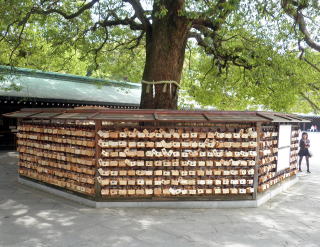

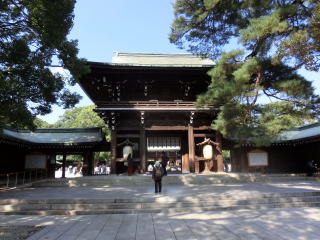
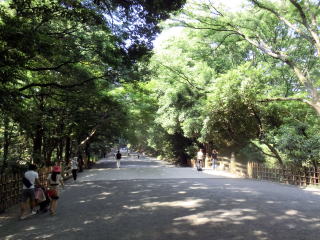
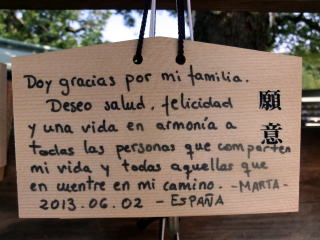
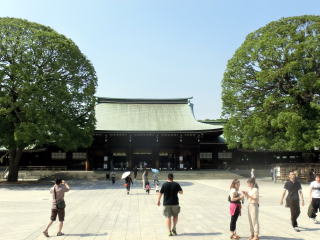
This is the last gate to the sanctuary.
This is the third gate.
You see two poems, one of the Meiji
emperor and another of his consort
on the white board.
Two maidens sells lucky charms.
This is where the visitors purify themselves
with water before entering the sanctuary.
This is the second gate and the access
turns to left here.
This is the main gate with emperor's
three crests of chrysanthemum above.
Cedars of 1,500 years old were brought
from Taiwan for the gates.
.
These barrels of sake and wine are offerings
from Japanese and French brewers.
Passing through the last gate we see
the temple in front and two saint camphor
trees at both sides.
This is the front of the main temple.
These vowing tablets are called EMA, a picture of horse. In the ancient
times rich people
brought a horse an offering to a temple so as to ask Shinto priest to pray
for them.
However ordinary people could not afford to do it but offer an tablet with
a picture of horse
instead. These days you can see these tablets at any Shinto shrine in Japan
and the tablets
usually have not only a picture of horse but also that of some zodiac animal
or crest of temple.
This is an access road to the sanctuary and
its length is about 300 meters. The people
usually walk at both sides leaving the Shintoist
deity the center of the access.
This is JR Harajuku station of Yamanote Line.
It is one of 29 stations of the line.








